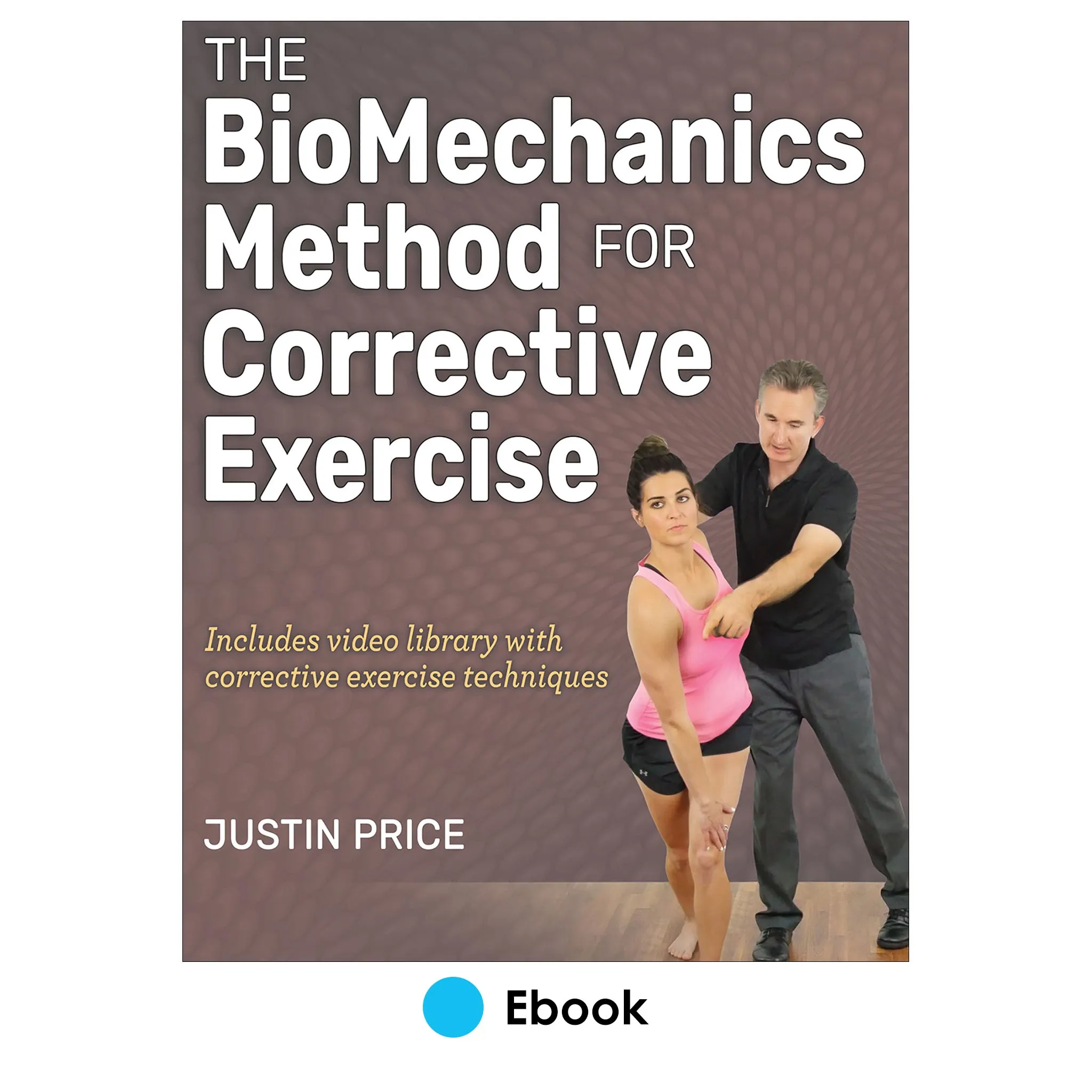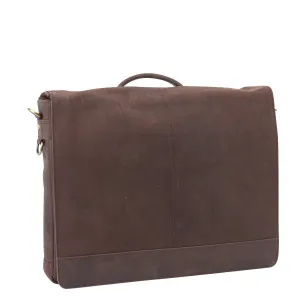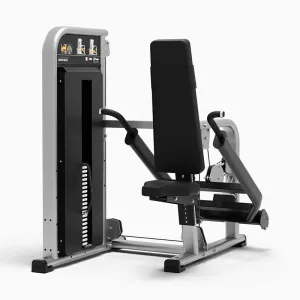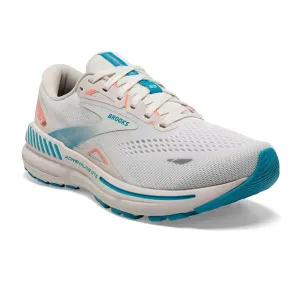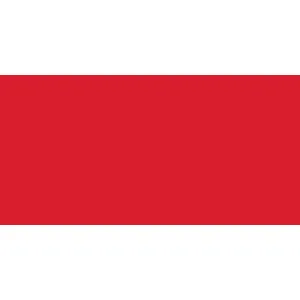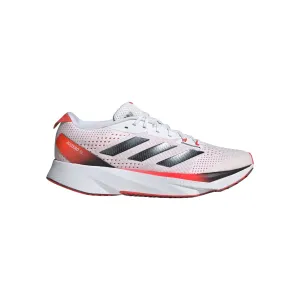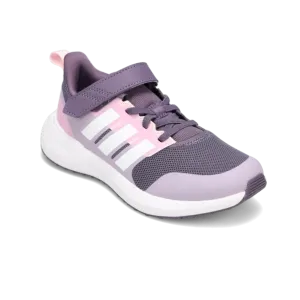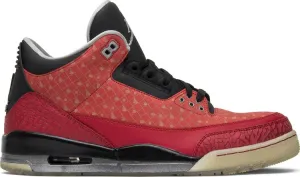Many people suffer from temporary or chronic musculoskeletal issues that cause pain and discomfort when performing even the simplest forms of physical activity. The BioMechanics Method for Corrective Exercise With Online Video is designed to help fitness professionals, athletic trainers, strength and conditioning specialists, and physical therapists to identify and correct underlying imbalances so their clients and patients can resume pain-free movement.
Written by Justin Price, creator of The BioMechanics Method and a former IDEA Health & Fitness Association Personal Trainer of the Year, The BioMechanics Method for Corrective Exercise provides a systematic approach for applying effective corrective exercise strategies to assess and address muscle and joint pain:
• Identify and assess common musculoskeletal imbalances
• Understand how those imbalances affect different structures of the body
• Learn about the various types of corrective exercises
• Select appropriate exercise strategies for a client’s circumstances
• Design a corrective exercise program that addresses the underlying cause or causes
To fully equip professionals with various options to address their clients’ needs, part IV of the text, Complete Corrective Exercise Library, contains more than 65 self-myofascial release, stretching, and strengthening exercises along with suggestions for exercise progressions and regressions. Each technique is supplemented with full-color photos, and additional illustrations and tables aid with proper execution. Plus, the companion online video features 36 clips that provide the opportunity to directly observe and follow along with the application of many of these remarkable assessment and exercise techniques.
The BioMechanics Method for Corrective Exercise also offers practical advice and tools to further enhance the skills learned from the text. Strategies and examples for communicating with clients are integrated throughout to facilitate effective consultations and proper cuing for both the assessments and exercises. Skill acquisition activities and self-checks in every chapter allow readers to practice and perfect the real-life application of their techniques. A case study pulls it all together to demonstrate how the entire process can be implemented, from assessment to program design.
Finally, to capitalize on the specialized skills that are developed by reading this text, the final section of the book is devoted to creating and managing a corrective exercise business. It covers information on networking and referral systems, tips for maintaining scope of practice, and marketing and promotion methods for attracting and retaining clients.
The practices outlined in The BioMechanics Method for Corrective Exercise have been proven successful by thousands of The BioMechanics Method Corrective Exercise Specialists around the world. Mastering the strategies and techniques in this book will enable health and fitness professionals to recognize potential causes of musculoskeletal imbalances and apply appropriate corrective exercises to swiftly eliminate pain and improve physical function.
Audience
Applied professional reference for allied health and fitness professionals, including personal trainers, athletic trainers, physical therapists, personal trainers, and strength and conditioning specialists; also a supplemental text for courses in therapeutic exercise, rehabilitation, and corrective exercise.
Part I. Fundamentals of Structural Assessment
Chapter 1. The Process of Structural Assessment
Initial Contact With Client
Structural Assessment Process
Review of Key Points
Self-Check
Chapter 2. Assessing the Feet and Ankles
Basic Anatomy
Common Deviations
Assessment Process
How the Feet and Ankles Relate to the Knees
Review of Key Points
Self-Check
Structural Assessment Skills Test
Chapter 3. Assessing the Knees
Basic Anatomy
Common Deviations
Assessment Process
Teaching Clients Neutral Position of the Knee
How the Knees Relate to the Feet and the Lumbo-Pelvic Hip Girdle
Review of Key Points
Self-Check
Structural Assessment Skills Test
Chapter 4. Assessing the Lumbo-Pelvic Hip Girdle
Basic Anatomy
Common Deviations
Assessment Process
Teaching Clients Neutral Position of the Lumbo-Pelvic Hip Girdle
How the Lumbo-Pelvic Hip Girdle Relates to the Feet, Ankles, Knees, and Thoracic Spine and Shoulder Girdle
Review of Key Points
Self-Check
Structural Assessment Skills Test
Chapter 5. Assessing the Thoracic Spine and Shoulder Girdle
Basic Anatomy
Common Deviations
Assessment Process
Teaching Clients Neutral Position of the Thoracic Spine and Shoulder Girdle
How the Thoracic Spine and Shoulder Girdle Relate to All Other Areas of the Body
Review of Key Points
Self-Check
Structural Assessment Skills Test
Chapter 6. Assessing the Neck and Head
Basic Anatomy
Common Deviations
Assessment Process
Teaching Clients Neutral Position of the Neck and Head
How the Head and Neck Relate to the Rest of the Body
Concluding the Structural Assessment Process
Review of Key Points
Self-Check
Structural Assessment Skills Test
Part II. Understanding Muscles and Movement
Chapter 7. Anatomy in Real Life
How Gravity Affects Movement
How Ground Reaction Forces Affect Movement
Overview of the Musculoskeletal System
Human Bungee Cord System
Review of Key Points
Self-Check
Chapter 8. Functional Anatomy of the Feet and Ankles
Bones and Joints
Soft Tissue Structures
Muscles
Effect of Foot and Ankle Muscles on the Most Common Musculoskeletal Deviations
Review of Key Points
Self-Check
Chapter 9. Functional Anatomy of the Knees
Bones and Joints
Soft Tissue Structures
Muscles
Effect of Knee Muscles on the Most Common Musculoskeletal Deviations
Review of Key Points
Self-Check
Chapter 10. Functional Anatomy of the Lumbo-Pelvic Hip Girdle
Bones and Joints
Soft Tissue Structures
Muscles
Effect of Lumbo-Pelvic Hip Girdle Muscles on the Most Common Musculoskeletal Deviations
Review of Key Points
Self-Check
Chapter 11. Functional Anatomy of the Thoracic Spine and Shoulder Girdle
Bones and Joints
Soft Tissue Structures
Muscles
Effect of the Thoracic Spine and Shoulder Girdle Muscles on the Most Common Musculoskeletal Deviations
Review of Key Points
Self-Check
Chapter 12. Functional Anatomy of the Neck and Head
Bones and Joints
Soft Tissue Structures
Muscles
Effect of the Neck and Head Muscles on the Most Common Musculoskeletal Deviations
Review of Key Points
Self-Check
Chapter 13. Fascia
Fascial Systems for Flexion and Extension
Fascial Systems for Lateral Movement
Fascial Systems for Rotational Movement
Fascial Systems and Complex Movement
Review of Key Points
Self-Check
Part III. Fundamentals of Corrective Exercise
Chapter 14. Elements of Corrective Exercise Programs
Building Client Confidence
Order of Exercises
Evaluating Exercises
Review of Key Points
Self-Check
Chapter 15. Self-Myofascial Release
What Is Self-Myofascial Release?
Origins of Self-Myofascial Release
Benefits of Self-Myofascial Release
Types of Self-Myofascial Release
Teaching Tips for Self-Myofascial Release Techniques
When Not to Use Self-Myofascial Release Techniques
Additional Considerations
Review of Key Points
Self-Check
Chapter 16. Stretching
What Is Stretching?
Origins of Stretching
Benefits of Stretching
Types of Stretches
Teaching Tips for Stretching Exercises
When Not to Use Stretching Exercises
Additional Considerations
Review of Key Points
Self-Check
Chapter 17. Strengthening
What Is Strengthening?
Origins of Strengthening Exercises
Benefits of Strengthening Exercises
Types of Strengthening Exercises
Teaching Tips for Strengthening Exercises
When Not to Use Strengthening Exercises
Additional Considerations
Review of Key Points
Self-Check
Chapter 18. Static Postural Considerations
Standing Postures
Seated Postures
Sleeping Postures
Review of Key Points
Self-Check 1
Self-Check 2
Part IV. Complete Corrective Exercise Library
Chapter 19. Self-Myofascial Release Exercises
Self-Myofascial Release Quick Tips
Self-Myofascial Release Exercise Library
Review of Key Points
Self-Check
Chapter 20. Stretching Exercises
Stretching Exercise Quick Tips
Stretching Exercise Library
Review of Key Points
Self-Check
Chapter 21. Strengthening Exercises
Strengthening Exercise Quick Tips
Strengthening Exercise Library
Review of Key Points
Self-Check
Part V. Corrective Exercise Program Design
Chapter 22. Building Successful Client Relationships
Understanding Basic Motivations and Behavior
How Roles Affect Behavior
Encouraging Client Participation
Functioning as a Facilitator
Review of Key Points
Self-Check
Chapter 23. Conducting Consultations
First Contact
Verbal Assessment Process
Visual and Hands-On Assessment Process
Closing the Deal
Review of Key Points
Self-Check 1
Self-Check 2
Chapter 24. Structuring Sessions and Programs
Beginning and Building Programs
Practical Considerations for Beginning and Building Programs
Review of Key Points
Self-Check
Chapter 25. Sample Sessions and Program
Client Background Information
Client Goals
Structural Assessment Results
Exercise Programming and Recommendations
Case Study Conclusion
Documenting Your Own Clients’ Homework
Self-Check
Part VI. Business of Corrective Exercise
Chapter 26. Enhancing Your Professional Image
Perfecting Your Protocols and Procedures
Improving Your Image to Attract New Clients
Integrating Corrective Exercise Protocols With Current Clients
Keys to Success
Review of Key Points
Self-Check
Chapter 27. Marketing Your Corrective Exercise Services
Understanding How Marketing Works
Creating Marketing Messages
Evaluating Delivery Methods
Implementing Your Marketing Strategy
Transitioning to a Full-Time Corrective Exercise Specialist
Review of Key Points
Self-Check
Chapter 28. Scope of Practice, Networks, and Referrals
Maintaining Your Scope of Practice
Developing Professional Networks and Referrals
Social Media and Networking Groups
Networking With Your Clients
Review of Key Points
Self-Check
Appendix. Blank Client Assessment Diagram
—Taylor-Kevin Isaacs, MS, CPT-MES, CSCS, NASM-CES, MELT, Award-Winning Kinesiologist and Exercise Physiologist
The author of The BioMechanics Method for Corrective Exercise, Justin Price, has developed a suite of instructor ancillaries that include sample syllabuses, instructor guides, PowerPoint slides, assignments and activities for students, a test bank, and an image bank. These ancillaries are free to adopting instructors through The BioMechanics Method.
More information about these ancillaries can be found at
To view a sample of the ancillaries or gain full access, please email .

 Cart(
Cart(